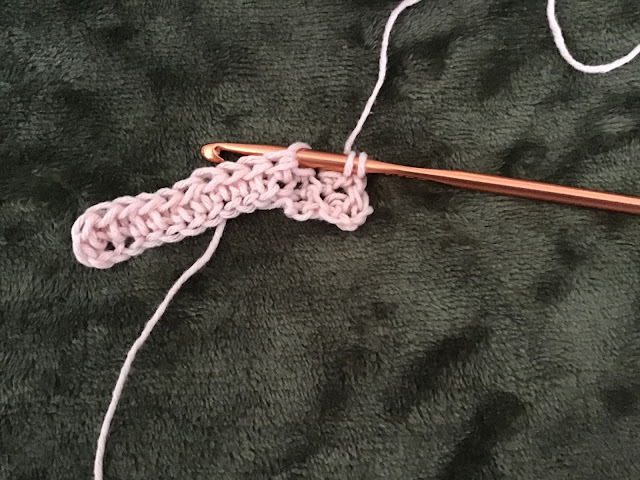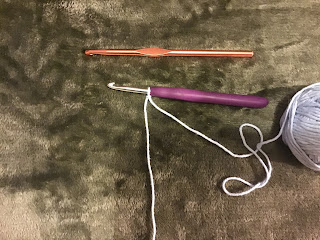Treble Crochet
1. Treble Crochet creates a more open and softer crochet fabric than the denser double and half treble crochet. As Treble Crochet is a tall stitch it grows quickly as you work.
2. Start by making as many chains required for your project.
3. After making the foundation chain, yarn round hook and insert the hook through the 4th chain from the hook, yrh again and draw a loop back through the chain.
4. There are now 3 loops on the hook.
5. Yrh and draw a loop through the first 2 loops on the hook.
6. There are now 2 loops left on the hook. Yrh and draw a loop through the remaining 2 loops.
6. This completes the first Treble . In Treble crochet, the 3 missed chains at the beginning of the chain count as the first stitch of the foundation row.
7. Continue working 1 Treble Crochet into each chain in the same way. ( the hook is inserted into both of the v stitches in the row below) .
8. Remember to start each stitch with a yrh before inserting the hook through the chain.
9. After the last stitch of the row has been completed, turn the work so the working yarn is on the right side.
10. Each new row is started with chain 3. This brings the work up to the correct height for the next set of stitches.
11. Then begin, missing the first Treble in the row below, work the first Treble into the top of the 2nd stitch.
12. Continue working a Treble Crochet into each v stitch, working the last stitch into the top of the 3 chains of the row below.
13. Work all following rows in this way.
14. It is a good idea to count the stitches as you work. While learning it is easy to miss off a Treble.
15. Practice this stitch by making a square or a scarf until you have mastered the technique.
















